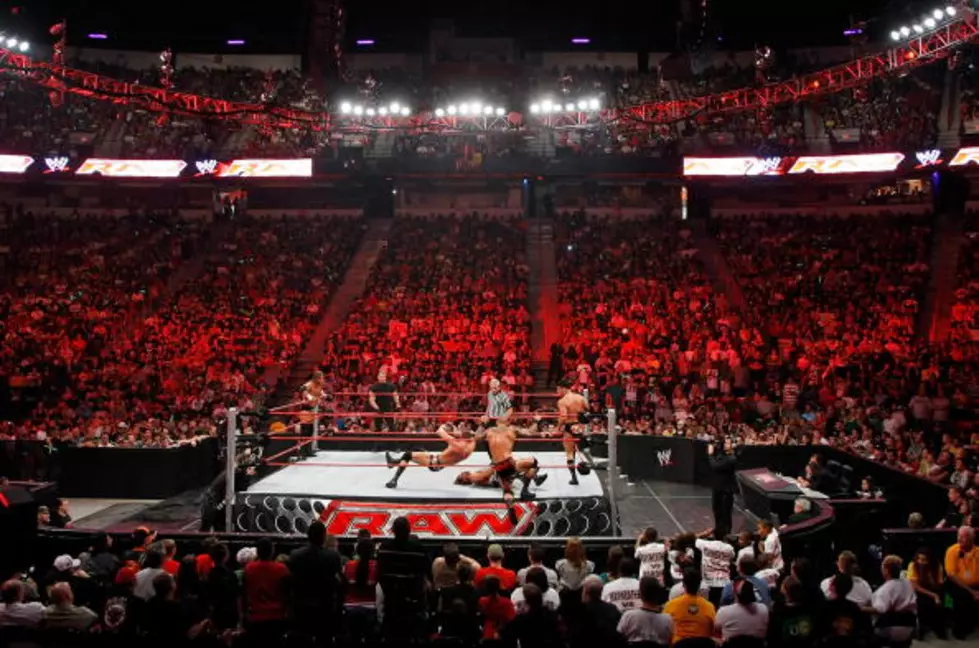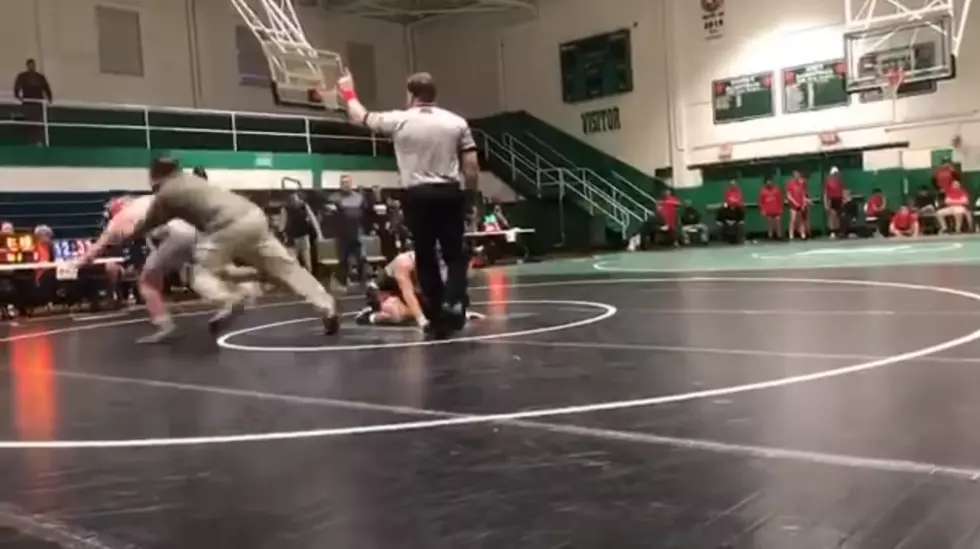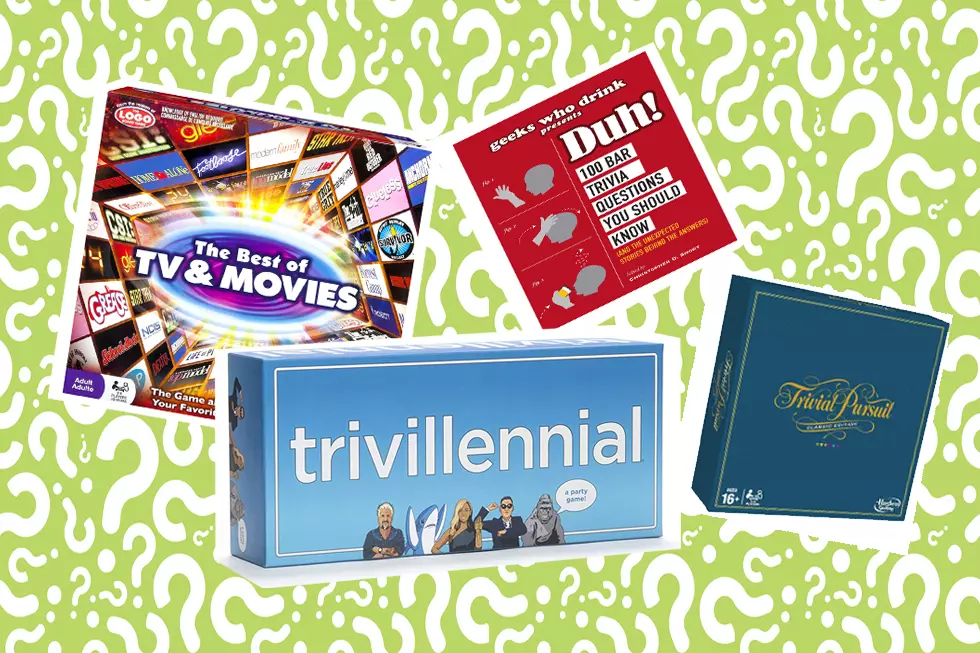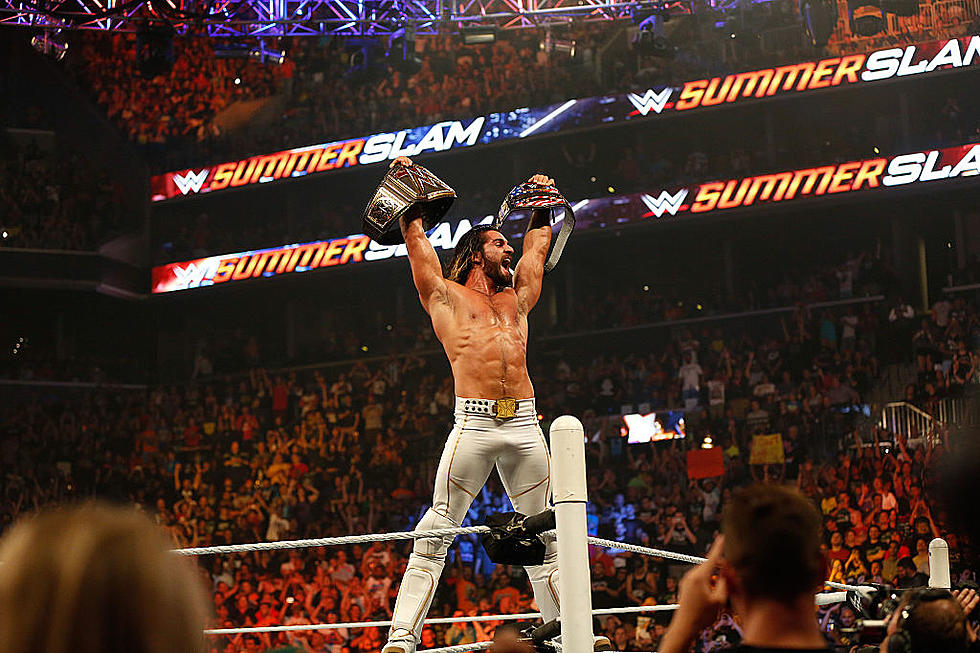
7 Facts You May Not Know About Professional Wrestling
With the release of the WWE Network in February, we are likely to see a surge in the popularity and exposure of the WWE and sports entertainment/pro wrestling. In honor of the revolutionary network and the fact that I'm apparently a fountain of useless trivia, here are seven things about the WWE and pro wrestling you may not know.
- 1
What is "Gorilla Position"?
If you stumble on a behind-the-scenes look at pro wrestling, especially for WWE, you might hear the phrase “Gorilla Position”. What sounds like something the wrestlers do with their wives when they get home is actually the central hub of any wrestling event. The staging area immediately behind the entry curtain houses video monitors, backstage producers, and wresters awaiting their cue. From this location management can communicate with the ringside announcers to guide their commentary towards the necessary direction, or even inform the referees of changes to the match plan or duration so they can pass the information to the performers. It was named after WWE Hall of Famer Robert Marella, known as Gorilla Monsoon, who established the location and was regularly manning the position after his time as an in-ring performer and commentator.
- 2
Triple H’s Punishment Launches Steve Austin’s Career
(Image via WWE.com)(Image via WWE.com) One of the most controversial moments in professional wrestling happened in 1996 at Madison Square Garden when Scott Hall and Triple H joined Shawn Michaels and Kevin Nash in the ring at an untelevised event immediately after Michaels defeated Nash in a cage match. As Hall and Nash were scheduled to leave WWF to go to WCW, this would be the last time the four friends would be together at MSG, considered the Mecca of the WWE, so they asked Vince McMahon for permission to say goodbye to the crowd together, what would later be known as “The MSG Incident” or “The Curtain Call”. This was a major break in tradition as Hall and Michaels were babyfaces (good guys) and Triple H and Nash were heels (villains), and to publically acknowledge heels and babyfaces were friends was taboo. Many wrestlers were offended at the breaking of the illusion of the business, and McMahon was forced to punish someone. As Hall and Nash were leaving the company and Michaels was the top draw and therefore untouchable, Triple H was left to hold the bag. Part of his punishment included losing his main event push which included winning the King of the Ring tournament, a victory that was given to up-and-coming wrestler “Stone Cold” Steve Austin. During his victory speech at the event, which is considered one of the greatest wrestling speeches of all time, Austin coined his best known phrases “Austin 3:16 says I just whipped your ass!” and “And that’s the bottom line, cause Stone Cold says so!”, resulting in a popularity surge that made Austin the biggest professional wrestler of all time, something that would have never happened if Triple H had not been punished and removed from the event.
Watch Austin's legendary speech HERE!
- 3
WCW Pays For Talent They’ve Already Signed
(Image via WWE.com)(Image via WWE.com) When Scott Hall and Kevin Nash decided to leave the WWF for WCW in 1996, they negotiated then-unheard of deals for guaranteed money (normally wrestlers were paid per appearance and placement the card) around a rumored $800,000 to $1,000,000 per year, 150 working dates (opposed to WWF’s average yearly run of 300+ dates), and “favored nations” status (guaranteeing that no one signed after them would receive a higher pay or their pay would have to be raised to an equal level). Not only that, Hall and Nash didn’t have to sign hard contracts, instead signing “Deal Memos” that outlined the proposed deal between the two men and the company, but were only binding on the part of WCW/Turner Broadcasting and allowed Hall and Nash to back out whenever they desired. Hall and Nash formed the NWO with wrestling legend Hulk Hogan, creating probably the biggest hype in the history of professional wrestling until “Stone Cold” Steve Austin. WWF sued WCW for infringement of Intellectual Property because Hall and Nash had not been identified by their real names and presented themselves on-air as their WWF characters, Razor Ramon and Diesel respectively. A few weeks into this groundbreaking storyline, WWF announced the return or Razor Ramon and Diesel. In response to the announcement, WCW panicked and offered Hall and Nash each an extra $400,000 per year to sign binding contracts to prevent them from leaving the company mid-storyline, to which Hall and Nash immediately signed. The next week on WWF programming, which WCW watched backstage during their live show, “Razor Ramon” and “Diesel” returned, but just the characters played by other wrestlers, not Hall and Nash. WCW never bothered to find out if Hall and Nash were actually returning to WWF and paid an extra $800,000 to sign two guys they had already signed. Keep in mind, this is the same company that was known for sending their talent empty Fed-Ex envelopes and royalty checks for $0.
- 4
Vince McMahon Owned WCW Before He Owned WCW
(Image via WWE.com)(Image via WWE.com) In 2001, Vince McMahon shocked the wrestling world when he purchased his competition, WCW. WCW had been floundering for a while, with the AOL/Time Warner merger resulting in the company wanting to ditch the product. Several buyers attempted to pick up the company, but finally it was Vince McMahon who purchased select assets from WCW, including certain contracts, trademarks/copyrights, and the entire video library. However, this isn’t the first time Vince McMahon owned World Championship Wrestling. In 1984, Vince McMahon was looking to extend his company’s cable television reach by having his programming on not only the USA network, but the more popular TBS as well. Ted Turner was already airing “World Championship Wrestling” from George Championship Wrestling and refused McMahon a timeslot. To gain the TBS timeslot, McMahon arranged to purchase controlling stock in Georgia Championship Wrestling. McMahon terminated most of the staff of GCW and filled the spots with his crew, having their first show air on July 7, 1984, known as “Black Saturday”. In response to the shift in wrestling tone, from GCW’s athletic wrestling to WWF’s cartoonish gimmick wrestling, and the loss of beloved talent like announcer Gordon Solie, TBS received thousands of complaint letters and the ratings for the show tanked. Turner, unhappy with the turn of events, gave air time to other promotions which easily beat the WWF’s ratings. Losing money, McMahon turned to National Wrestling Alliance President Jim Crockett, Jr. to arrange a sale. Crockett was the owner of Jim Crockett Promotions and was attempting to unify other territories who were affiliated with the NWA to battle the WWF’s expansion. Crockett purchased “World Championship Wrestling” from McMahon for $1,000,000 and ran his promotion’s matches on the show. Ted Turner then purchased Jim Crocket Promotions in 1988 and rechristened it World Championship Wrestling, which McMahon bought 13 years later.
See "Black Saturday" Videos HERE!
- 5
The WWF vs. The WWF
For many years, people were confused over the acronym “WWF” as it stood for the World Wrestling Federation and the World Wildlife Fund. In 1994, both sides entered into agreement where Titan Sports (the owner of the wrestling WWF) would cease using the written form of “WWF” and minimize the spoken use in scripted comments. On the Wildlife Fund’s side, they agreed to drop all pending litigation against Titan Sports and to not challenge the use of the full name or logo for the World Wrestling Federation. The World Wildlife Fund sued Titan Sports in the United Kingdom in 2000 for violating the 1994 agreement and the British courts ruled in the Wildlife Fund’s favor. In 2002, Titan Sports changed the WWF to the WWE, changing the company name from World Wrestling Federation Entertainment, Inc. to World Wrestling Entertainment, Inc., and launching a name changing campaign called “Get the F Out”. WWE was also forced to censor all instances of the “Scratch” WWF Logo (the classic block logo was exempt from the 1994 litigation) and spoken instances of “WWF” in archival footage. In 2012, WWE and WWF reached a new agreement that allowed the WWE to not censor the “scratch” logo or spoken instances of “WWF” in archival footage, but are not permitted to use the old logo in any new footage or advertising.
- 6
The Muta Scale
(Image via WWE.com)(Image via WWE.com) While there is no official scale for the amount of blood spilled during a match, wrestling fans coined the term “The Muta Scale” after a notorious Japanese match on December 14, 1992 between The Great Muta and Hiroshi Hase. A little more than halfway into the match, Hase attacked Muta with a crowbar, for which Muta “bladed”, cutting himself with a hidden piece of a razor blade. Ideally, when a wrestler blades the intention is to make a small knick that will bleed and mix with sweat to create the illusion of a flowing wound. However, Muta cut himself too deeply and began bleeding profusely. This stood as the bloodiest match for over a decade until Eddie Guerrero took a hard chair shot from John Bradshaw Layfield, and possibly bladed, and began pouring blood within seconds.
See Muta vs. Hase HERE!
See Guerrero vs Layfield HERE!
- 7
The Chris Benoit Aftermath
(Image Credit: Peter Kramer/Getty Images)(Image Credit: Peter Kramer/Getty Images) On June 24th 2007, Chris Benoit took his own life after taking the lives of his wife and son. Immediately after the tragedy, many news outlets began speculating that Benoit killed his family during an instance of “Roid Rage” as Benoit had been revealed to be one of several wrestlers to illegally obtain steroids and Benoit was believed to be on testosterone replacement after previous steroid use. After Benoit’s death, his father Michael was approached by former WWE Superstar Chris Nowinski asking Michael to donate his son’s brain for examination on the effects of repeated trauma and concussions on a wrestler’s brain (Nowinski himself was forced to retire as a young age due to repeated concussions). The examination was conducted by the head of neurosurgery at West Virginia University and found that Benoit’s brain was so damaged that it resembled the brain of an 85-year-old Alzheimer’s patient. Benoit’s brain damage would have also included dementia, similar to that found in the brains of four former NFL players who also suffered multiple concussions, resulting in depression, and ended up harming themselves and/or others. It was then concluded that the trauma and resulting brain damage from multiple concussions could lead to dementia and behavioral problems.
When the news of Benoit’s death first broke, the WWE immediately cancelled that night’s “Monday Night Raw” broadcast and aired a tribute show in Benoit’s honor. When it was revealed that it was Benoit himself who caused the deaths, Vince McMahon appeared on WWE programming explaining the WWE’s choice to air the tribute (not yet knowing the details of the tragedy), and that apart from his comments that night, there would be no other mention of Chris Benoit within the WWE from that point on. The WWE has recently announced the launching of the WWE Network, a 24/7 streaming network that includes classic shows and pay-per-views from the WWF/WWE, WCW, and ECW, all of which Benoit worked for. Reports are that as the WWE has advertised these as uncut and uncensored, Benoit will not be removed from the shows, but a disclaimer will be posted before any show he will be a part of.
More From 92.9 NiN









